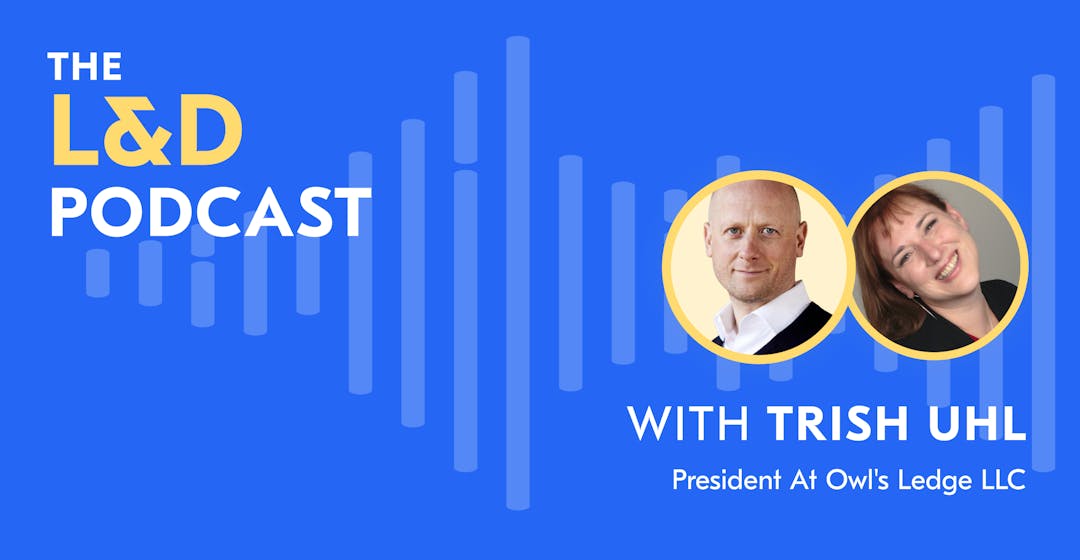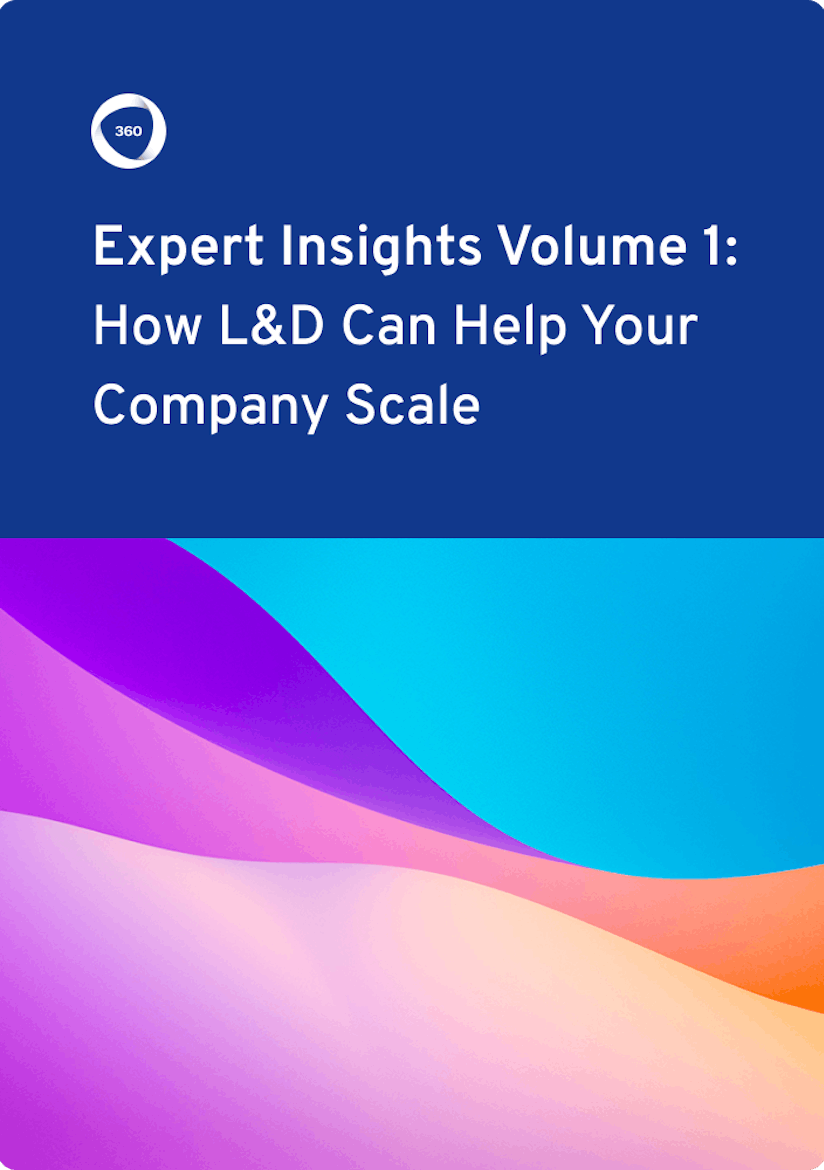
The Early Adopter Phase is Over: An L&D Data and Analytics Deep Dive with Trish Uhl
Data and analytics have transformed organizations everywhere, radically reshaping our daily lives. But L&D is late to the party.
Even in companies where data drives every operational, financial, and customer-led decision, the L&D function is often stuck doing things the old-fashioned way. The good news is it’s not too late to jump onboard.
In this L&D podcast recap, I sat down with Trish Uhl, leading data and analytics strategist and consultant, about how data can transform L&D. Trish has delivered huge business value to organizations with her approach, which is why it was so fantastic to speak to her about what L&D departments can do to catch up with the rest of the organization when it comes to data.
Read on to find out more about what L&D teams need to understand about data, how to create new ways of working with analytics, and what this means for the future of L&D.
What do we mean by data and analytics?
Firstly, Trish states that adopting a data and analytics approach to L&D doesn't require you to be a numbers person. “The actual math is left largely to the computers and the data scientists,” she says. Simply having a broad understanding of what data can do and what makes good data is enough to make a meaningful impact on an L&D program.
One of the tips Trish offers is to prioritise qualitative data over quantitative data. “While more data is beneficial in ensuring accuracy, this is only the case if the data itself is solid,” she explains.
Combined with this qualitative view, Trish shares the importance of adopting a data mindset. She argues that historically, data has been an afterthought within L&D. “It's traditionally been used to generate reports that can measure the results of something else,” explains Trish. But modern data science goes beyond that. It allows the data itself to be formative and predictive.
While more data is beneficial in ensuring accuracy, this is only the case if the data itself is solid.
Let’s take a closer look at how L&D decision-makers can make the shift to a data mindset.
To learn more about how L&D can improve the performance of your teams and help your business scale, check out our free ebook: Expert Insights Volume 1: How L&D Can Help Your Company Scale

You have questions–the experts have the answers
By providing your contact info, you agree to receive communications from 360Learning. You can opt-out at any time. For details, refer to our Privacy Policy.
How L&D leaders can adopt a truly data-driven mindset
Trish says that there are several pioneers in the learning analytics space who brought data into L&D 30 years ago. But the L&D industry as a whole has struggled to get onboard with new technology.
The early adopter phase is over. “With a lot of newer technology, it's not uncommon for people to take a wait-and-see approach. There's no sense of urgency for a technology that hasn't yet become ubiquitous,” says Trish.
But this isn't the case with data and analytics, because every other company function has long since switched to a data-driven approach, and the tools have been there for some time. Understanding the urgency of adopting the technology provides the 'on switch' for adopting the right mindset. "It's no longer about aspiration, it's about expectation," says Trish.
Trish goes on to remind us that the purpose of L&D is to support our organizations. Organizational structures have changed. What was once a top-down bureaucratic style approach has shifted to pushing decision-making further down the chain. This shift has been necessary for companies to keep up with the rate at which things change.
It's no longer about aspiration, it's about expectation.
“An L&D program can't properly support the company if it's the last to adopt tools that provide agility,” explains Trish.
With the proper mindset in place, let's look at how L&D can begin to make use of data.
Test and evaluate: the data mindset shift in practice
The first step to making the most of data requires a bit of a mindset shift in itself. “We need to be willing to be wrong,” says Trish. “Data allows us to examine nearly every aspect of the L&D journey. Instead of assuming that the things we are doing are correct, we need to be willing to put them to the test by evaluating the data so that we can be sure we're actually doing the right thing to get the best outcomes.”
Trish gives an example to demonstrate this. “During Halloween, there might be troublemakers playing pranks on the neighborhood. Previously, unless the kid was caught red-handed, the blame would be based on assumptions or past data—the kid who's a known troublemaker or the kid who got caught at one house is assumed to be the culprit at another.”
“Now, entire neighborhoods have video doorbells, making it easy for neighbors to notice patterns about troublemakers, and even warn each other in advance.”
Instead of assuming that the things we are doing are correct, we need to be willing to put them to the test by evaluating the data so that we can be sure we're actually doing the right thing to get the best outcomes.
This translates perfectly to data usage in any other area. Whether you're testing a new hypothesis or an old assumption, you need to move past the old paradigm of looking to previous, often outdated, methods of answering the question and look to new, more creative, and more data-driven approaches.
Related: 3 Data-Based Ways To Prove Training ROI (+ Free Training ROI Calculator)
What does the future of data-driven L&D look like?
Trish concludes that L&D teams need to adopt new ways of working to adapt to the digital disruption. As learning is a critical survival element for both employees and companies alike, L&D teams need to remain agile and develop new ways of learning that keep pace with the changing times. This includes embracing the very digital technology that's driving the disruption.
As learning is a critical survival element for both employees and companies alike, L&D teams need to remain agile and develop new ways of learning that keep pace with the changing times.
Trish also re-emphasized the importance of qualitative data sources. With the ability for machine learning algorithms to analyze audio, video, and text, data sources are now everywhere. Zoom, Skype, and Microsoft Teams all provide a wealth of data that companies can use to learn how learners are responding to a training program. L&D departments must embrace the idea of learning from them to move forward.
Thanks again to Trish Uhl for speaking to us about her successful experiences in using data and analytics to improve L&D performance!
Keen to hear more about actionable and insightful L&D stories? Explore my session with Filip Lam on driving better learning outcomes.
Want more peer insights on transforming workplace learning? Sign up to become a member of the L&D Collective, and check out our other #CLOConnect interviews with top L&D leaders on driving growth and scaling culture through Collaborative Learning. Or you can subscribe (below 👇) to our weekly newsletter to receive our latest posts directly in your inbox.

